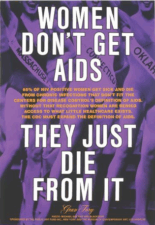During the 1980s, a boom in women’s magazines expanded and reshaped the market. The magazines provided a space for women to explore ideas and concerns about their bodies within a community of others with similar worries searching for the same information.
In my broader research on women’s magazines of the 1980s, I have compared different publications, including Cosmopolitan. In this piece, I will focus on how Spare Rib discussed the topic of health. The topic of health was covered in a variety of ways from dedicated issues, articles and particularly within the reader letter section which was featured in every issue.
Whilst the publication focused on a wide range of topics, health was a common feature within its pages. A key focus of this discussion of health was to make knowledge about the body available to women who may not have been able to access such education elsewhere. This was significant in terms of reproductive health. Spare Rib aimed to provide women with information on how to take control of their bodies. One such example is the Down There – Using Speculums for Self-Examination piece written by Sophie Laws in Spare Rib’s July 1981 edition. The article focused on explaining how to self-examine the vagina. Through this instructive piece, power was attributed to understanding your own body. The key to this was asking for help from the women around you in the practicalities of grabbing a mirror and having a look. This was compared to the use of “cold, mysterious instruments” and doctors “using words which are intimidating and unnecessarily technical”.[1] Spare Rib proposed a shift in this control and education for women and their reproductive health.
Spare Rib aimed to provide readers with the information they did not get from their doctors. The August 1981 edition printed an article titled Womb Loss. This piece included information on the process of a hysterectomy, the range of conditions linked to the operation, and the side effects. The author, Kate Cape, stated that “doctors often fail to explain to their female patients how major an operation a hysterectomy is”.[1] Cape quotes a doctor attempting to reassure one patient regarding surgery, suggesting that “there is no difference in removing your womb and/or ovaries than removing the appendix”.[1] There was an overlap in the magazines’ approach toward the health of being informative, but also encouraging women to share their experiences, good or bad.
Readers were encouraged to contribute to discussions via Spare Ribs letter section and helped which included critiquing the magazine when readers felt it was required. One letter from the August 1987 issue in response to the article, Breasts: What to do when you find a lump, states, “it is a shame, however, the article states that a mammographic examination can be demeaning to women”. The author of the letter is a radiographer doing mammograms and goes on to explain how “every patient is treated sympathetically and always as an individual[1]”. Through publishing letters like this Spare Rib provided a space for open discussion where people could disagree with what was being said and give their own opinions.
The readers of the magazine were active contributors to the discussion of health and the body. These points of focus expanded from more direct health concerns to also experience when it came to seeking medical support for worries about the body. In response to a previously published article in Spare Rib focusing on excessive bodily hair, an anonymous contributor sent in a letter. The contributor shared her experience of visiting her doctor, who overlooked her concerns and instructed the woman that she would just need to learn to shave every morning[1]. Spare Rib focused on body hair, which allowed women to share their experiences and advice when approaching medical help, which did not result in much assistance. The author of this letter provides practical advice for women in a similar position, highlighting her treatment of electrolysis on her face as a success. Body hair was not made to be an issue in the magazines coverage of it but provided a space for women who felt like they required further support
Readers were quick to also complain if they felt the information provided in articles was not satisfactory. In response to an article in February 1988 from Spare Rib discussing cervical cancer, a letter from the following issue highlighted a reader’s disappointment in how the author covered the topic. The author of the letter, J.M. Parkin, explained that “much of the information in the article was the same as I might have read three years ago” and further suggested that there was a “distinct lack of practical advice about what women can do.[1]” Whilst this is a singular review of the information printed within the magazine, it highlights the urgency that women were feeling about the information available to them about their health. Women’s magazines fulfilled a need for knowledge about the female body, and the magazines were not afraid to be criticised and encouraged to go further.
Spare Rib would continue to support health concerns and aim to provide women with up-to-date relevant information. When it was not sufficient, their readers were ready to let them know. These were not quiet complaints, but Spare Rib was willing to share these letters and provide an open view of readers’ thoughts. The coverage of health by the publication attempted to make up where other areas were failing women. With the open approach to discussion women were able to seek help and an understanding of their body.
Hannah Sherwood is a recent MA graduate in Modern History from the University of Warwick. Her dissertation focused on the discussion of women’s bodies in two British 1980s magazines with a focus on health. Hannah is currently focusing her research on women in the media industry alongside her collaborative project Dandelion Academics @Dandeacademics.

